Bitterroot Cross-Country Ski Centers
What to do in Montana...
What to do in Montana...
With less than one million people in Montana, privately owned Mom and Pop ski areas are somewhat of a commodity. Montanans take pride in giving their dollars to locals. With such ownership, the environment at the ski areas tends to be more family-oriented and relaxed. Patrons expect uncrowded slopes and familiar faces. Among these areas are Lost Trail Powder Mountain and the touring trails on Chief Joseph Pass.
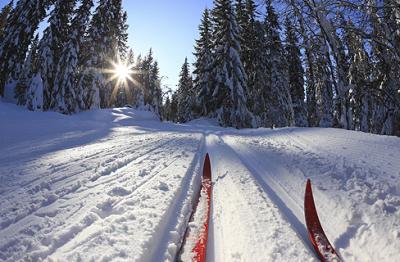
Lost Trail Powder Mountain is located near Sula, Montana, roughly 90 miles from Missoula on the border of Idaho. Lift tickets range from $5 for one ride up the lift to $34 for an adult full day pass. A full rental shop offers various options for packages and rates for both skiers and snowboarders. The mountain opens at 9:30 a.m. Thursday through Sunday morning and stops spinning its lifts at 4 p.m.. The mountain offers extended skiing during busy holiday weeks, such as Christmas, when they will be open 18 days straight for the holidays. Also, on Martin Luther King, Jr. Day and President’s Day both offer a long weekend of fresh turns for the enthusiasts. All of the snow is natural, so the lifts don’t start spinning until the first week in December and keep on spinning through mid-April. “We don’t make snow so we’re weather dependent,” says co-owner, Judy Grasser.
The Web site states that Lost Trail is a “family owned ski area,” run by Judy Grasser and her brother. Grasser is the second generation owner of Lost Trail Powder Mountain, taking over responsibility from her father. “He’s stepping back a lot,” Grasser says of her dad, who bought the resort in 1967 with another individual. “The partnership dissolved within five years” and Grasser’s dad took full ownership.
The first skiing in the area dates back to the 1930s. A ski club out of Gibbonsville, Idaho, began making turns and laying claim to the area. Members parked on the highway and walked into the forest for fresh tracks. The first special use Forest Service permit was issued in 1938 and plans began for an official ski area soon after. Throughout the next 30 years, the resort saw a few different private owners, some of whom went in together on the project, such as Grasser’s father.
Lost Trail Powder Mountain has been appropriately named. The mountain averages over 300 inches of snow a season and “consistently enjoys the greatest snow depth of any Montana ski resort,” claims the Forest Service Web site.
The only thing lacking from Lost Trail Powder Mountain is overnight accommodations. “We’re just a day facility only,” claims Grasser. However, the Lost Trail Hot Springs Resort is just six miles away. Along with the hot springs, are nine cabins, four cedar lodges, eight motel rooms, and two honeymoon suites, all available Thursday through Sunday. Overnight lodging includes use of the hot springs, but many visitors come in for day use also.
The Resort is privately owned and operated by locals, Stann and Mary Honey. They offer a special treat for season pass holders at Lost Trail Powder Mountain. With a valid pass, two people can rent the cabin units for the entire ski season for $1,000 per person. The cabins have two queen size beds, a kitchenette, a bath, and shower. “We’d like to implement this deal this season,” says Stann.
The Lost Trail Hot Springs also offers ski-and-stay packages as well as other options for overnight and day use accommodations.
The Chief Joseph touring trails are located on the north side of Highway 43 at Chief Joseph Pass. The trails are situated on Forest Service land in the Beaverhead–Deerlodge National Forest, about 28 miles west of Wisdom, Montana. The trails are maintained by the Bitterroot Cross Country Ski Resort, a volunteer organization that offers groomed trails free of charge to the public for cross-country skiing.
The club tracks and maintains the 24 kilometers of trails each week during the season. “In the winter, the track crew spends all day Friday, from the first of December through March, setting track,” says President of the Club, George Corn, who adds that “We only groom and set track for classic style” skiing. The Club relies on 100 % volunteer efforts to work on the trails, the cabin that it built, and the fundraising for the entire operation. “Each year the club members donate 1,600 hours a year to maintaining the tracks in the summer, tracking them in the winter, and cutting wood for the cabin,” says Corn.
The Club has not always been this large or involved in the trails. Gordon Reese became the unofficial founder of the organization when he moved and retired from Alaska and “looked for an area to go cross-country skiing.” “I was just the one that sort of got the ball rolling back in ’89,” Reese modestly claims. According to Corn, Reese’s humility speaks louder than his words. “Gordon was the driving force behind the Club from the start. It is no exaggeration to say that without Gordon’s energy and drive, there would be neither ski club, nor tracks, nor cabin at Chief Joseph Pass.”
Since the trails lie on public land managed by the Forest Service, Reese worked and negotiated with the Forest Service to see if a plan for cross-country ski trails in the area was “feasible and workable” and if “it would be a value and a plus for people who lived in the area.” However, the Forest Service wanted to work with a club, not just an individual. Reese got to work right away putting advertisements in local newspapers and was successful. At his first meeting, there were 55 curious faces. According to Reese, it was “proven that a lot of people valued cross-country skiing.” The meetings are now a monthly occurrence, and the Club has included as many as 370 members.
In the Club’s first season, 1991, seven kilometers of trail were produced. In the next season, Reese says that people found them something they really enjoyed. The Forest Service put in a parking lot and a toilet, and the Montana Department of Transportation plows the lot. “That really is the key to the whole issue,” says Reese about the parking lot, since the area can see over 300 of inches of snowfall in a season. The Club does not have the equipment to clear that much snow from the sixty vehicle lot.
In the 1994-95 season, the Forest Service analyzed and evaluated the idea of a warming hut as a positive amenity. After 36 months, they finally approved the decision and the Club began working on the cabin in 1998. After three summers of fundraising and building, the cabin was completed in 2001. Over $100,000 was raised and donated for the project, and volunteers invested 5,500 hours and drove 36,000 miles to and from Hamilton without a single accident or incident. “We were very lucky,” sighs Reese.
“A lot of people got involved once the cabin started going up. It appealed to skiers in general,” comments Reese. Before the cabin and due to the isolation of Chief Joseph Pass, “You had to be sort of a toughie to ski up there,” says Reese; many times skiers would go back to the highway and start their cars up for lunch and warmth. Upon completion of the cabin, Reese says that “immediately people came and skied longer.” A major effect of the cabin that Reese and the Club had not anticipated was the diversity of skiers who came out the trails. Older individuals and families with small children began frequenting the trails, as well as people who were not physically fit or had older equipment. “They just had incredible days,” says Reese.
As an incentive for cabin maintenance throughout the winter, anybody can be a host in return for keeping the fire going, shoveling snow, and keeping the cabin clean. It has become an “opportunity for people who just want to help out,” says Reese, who also claims that the cabin offers a pristine setting over night and admires the impressive natural beauty of the area. According to Reese, the cabin “worked out better than anyone anticipated.”
The cabin was donated to the Forest Service in return for their efforts. The Forest Service buys the propane for the cabin’s stove and pumps the toilet. “We really do maintain a cooperative partnership with the Forest Service,” says Reese.
The Club now consists of a 20-member nucleus, including a board of directors. “I must add that we have one day of lessons offered to the public for free,” says Corn. The lessons are usually held in January. This year, the board is looking to hold presentations on gear and safety and include advanced lessons also. Reese brags that “cross-country skiers seem to be pretty talented people at solving problems and getting things done.”
The reasons that Chief Joseph Pass was chosen as host for the trails are extensive. Along with the natural beauty of the area, a major concern was the lack of avalanche problems on the trail system due to the area’s rolling hills instead of steep slopes. There is also good public access from the highway. Also, because the pass is situated over 7,000 feet, it gets “early snow, lots of snow, and good quality of snow,” says Reese.
The Bitterroot Cross Country Ski Club begins planning each season in August and holds an annual potluck and workday in early September. Along with monthly meetings, the Club also puts out a newsletter nine months out of the year, which can be viewed on the Club’s Web site.
This season should prove to be just as eventful as past winters. Snow enthusiasts all across the state look forward to that first accumulation so they can dust off their skis and bundle up. Be sure to check into our state’s local facilities and think snow!
Lost Trail Powder Mountain - www.losttrail.com - 406.821.3211
P.O. Box 311, Conner, MT 59827
Ski/snowboard school - 406.821.0025
Lost Trail Hot Springs Resort - www.losttrailhotsprings.com or 406.821.3574
Bitterroot Cross Country Ski Club - www.bitterrootxcskiclub.net
P.O. Box 431, Corvallis, MT 59828
Warming Hut Reservations - 406.689.3371
Beaverhead-Deerlodge National Forest - www.fsfed.us/r1/bitterroot/ or 406.683.3900
Wisdom Ranger District - 406.689.3243
Lodging for Chief Joseph Pass Touring Trails
Pioneer Mountain Lodge: 406.689.3229
Steel Creek Bed & Breakfast: 406.689.3435
Big Hole Crossing Cabin: 406.689.3800
Nez Perce Motel: 406.689.3254
~ Jamie Kujawa moved to Bozeman from Vail, CO, where she was also a freelance writer. She enjoys swimming and writing as well as the mountain lifestyle and anything snow.

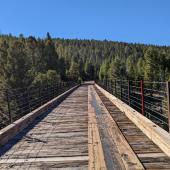
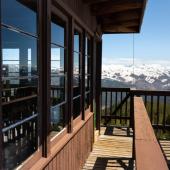
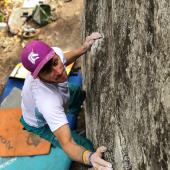
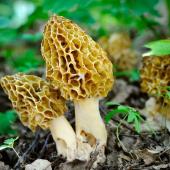
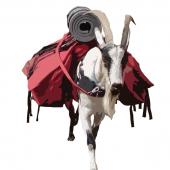
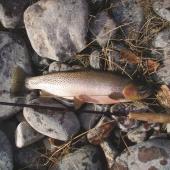
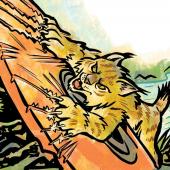
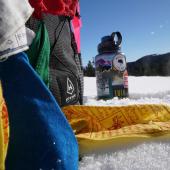
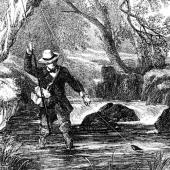
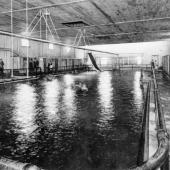
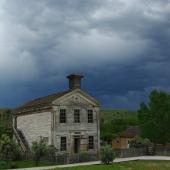
Leave a Comment Here